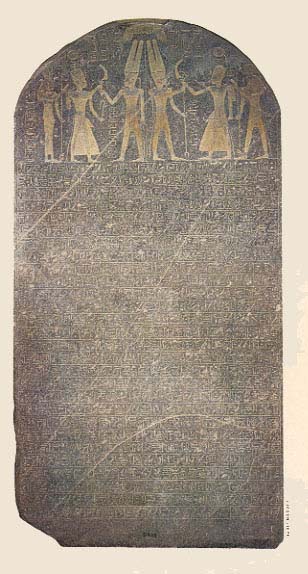Image Details

Jurgen Liepe
The Merenptah Stele, in the Cairo Museum, bears the oldest known written reference to Israel. Engraved with its current text in 1207 B.C.E., the 7.5-foot-high, black granite monolith was discovered in the ruins of Merenptah’s funerary temple in western Thebes in 1896. Most of its hieroglyphic text celebrates Merenptah’s defeat of the Libyans and their Sea Peoples allies in his fifth regnal year. The text’s last two lines, however, briefly mention an earlier, successful campaign into Canaan, including four victories that seem to be depicted on the Karnak wall: “Ashkelon has been overcome. Gezer has been captured. Yano‘am was made non-existent. Israel is laid waste, (and) his seed is not.” The mention of Israel (see detail) appears slightly to the left of center in the second line from the bottom. The glyphs include determinatives—signs indicating a word’s category—that classify Ashkelon, Gezer and Yano‘am as city-states; but the determinative attached to Israel identifies it as a people, apparently not yet possessing a distinct city. This classification corresponds to Merenptah’s four battle scenes on the Karnak wall, the first three of which show besieged cities, while the fourth shows a people fighting in open country. Moreover, the first battle relief depicts Ashkelon, the first victory named in the stele. Further support for this correspondence comes from the location of a fragmentary duplicate of the stele text, including the description of the Canaanite campaign, discovered inside the Cour de la Cachette, near the battle reliefs.
